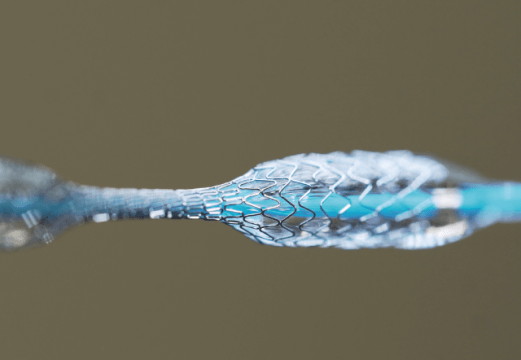Original title: Survival After Endovascular Therapy in Patients With Type B Aortic Dissection. A Report From the International Registry of Acute Aortic Dissection (IRAD). Reference: Rossella Fattori et al. J Am Coll Cardiol Intv 2013;6:876–82.
Endovascular repair of the thoracic aorta is becoming a viable alternative, though its efficacy had not been followed up longer than two years.
This study was based on the IRAD registry (International Registry of Acute Aortic Dissection) and compares long term outcomes of TBAAD receiving treated with TEVAR (thoracic endovascular repair) vs. medical therapy alone. The IRAD is a 24 center registry designed to provide information on TBAAD patients.
From 3865 patients included in the registry between 1995 and 2012, 1133 were diagnosed with type B dissection, 853 (74.8%) received medical therapy alone and 276 (25.2%) received TEVAR. TBAAD patients that required open surgery during the acute phase (n=183, 13.6%) were not included in this analysis.
Since it was not randomized, the study used a multivariate model with propensity score to balance the baseline differences between both groups. In-hospital mortality was similar for both strategies (10.9% TEVAR vs. 8.7% medical therapy, p=0.273) also at one year follow up. However, TEVAR had significantly lower mortality at five years, (15.5% vs 29%, p=0.018).
At five years, the descendant aorta diameter was also different between the groups: 42 mm for TEVAR patients and 46mm for medical therapy (p=0.034).
Conclusion:
History supports the use of medical therapy for TBAAD. In the IRAD registry, TBAAD treated with TEVAR showed better survival rates compared to the medical therapy group. It seems that early intervention with TEVAR should be indicated for patients with uncomplicated TBAAD.
Editorial Comment
Patients who received TEVAR often presented signs of malperfusion (20.6% vs 4.8%; p<0.001) shock, periaortic hematoma, mesenteric ischemia, spinal cord ischemia, renal failure, etc. (61.7% vs 37.2%; p<0.001). Despite the above short-term results were similar to long-term medical treatment and higher. The Xin Jia group had already published in J Vasc Surg a similar cohort with similar outcomes, which adds more evidence in favor of TEVAR for TBAAD patients.
SOLACI.ORG





